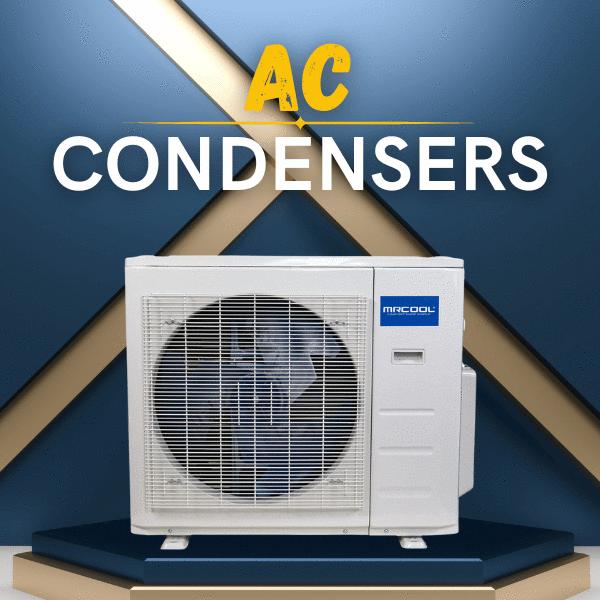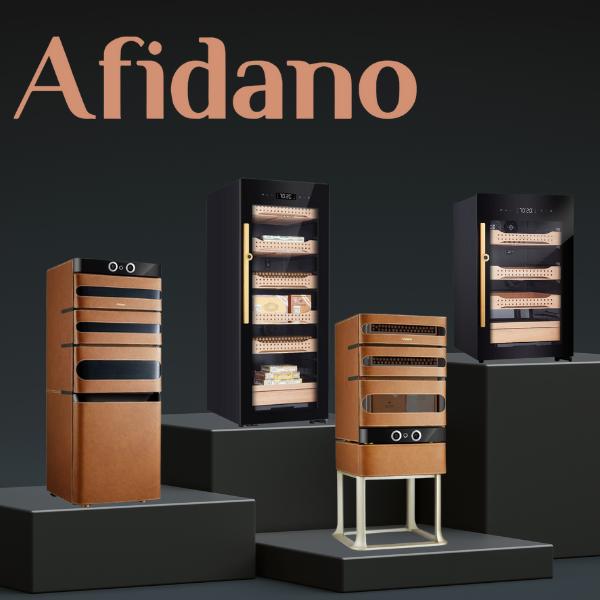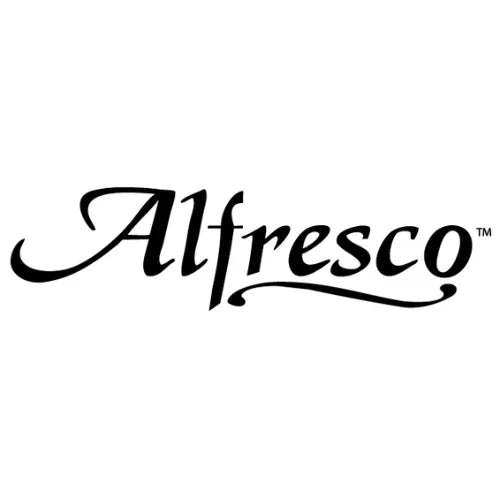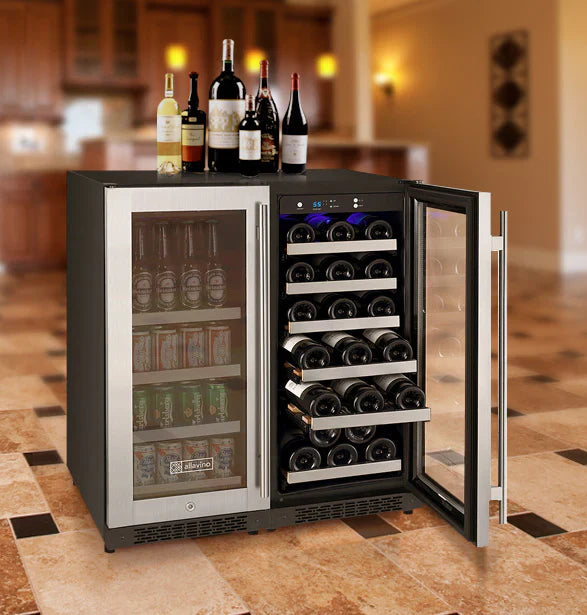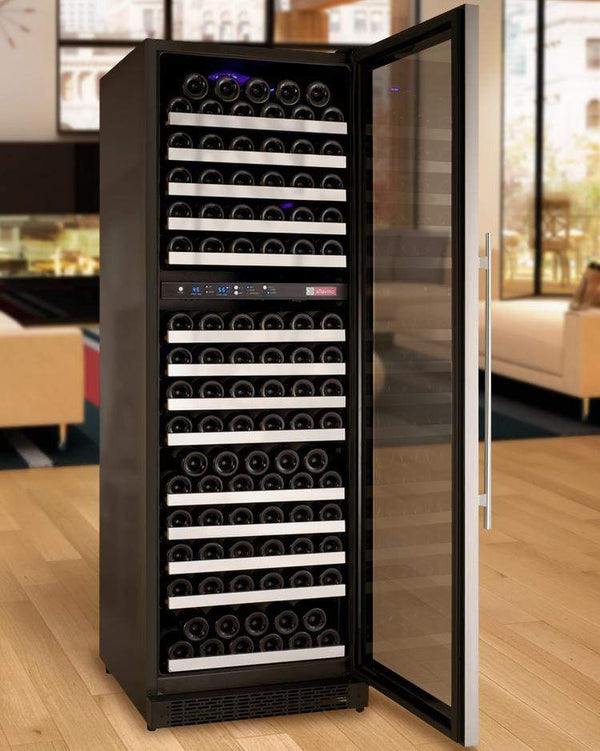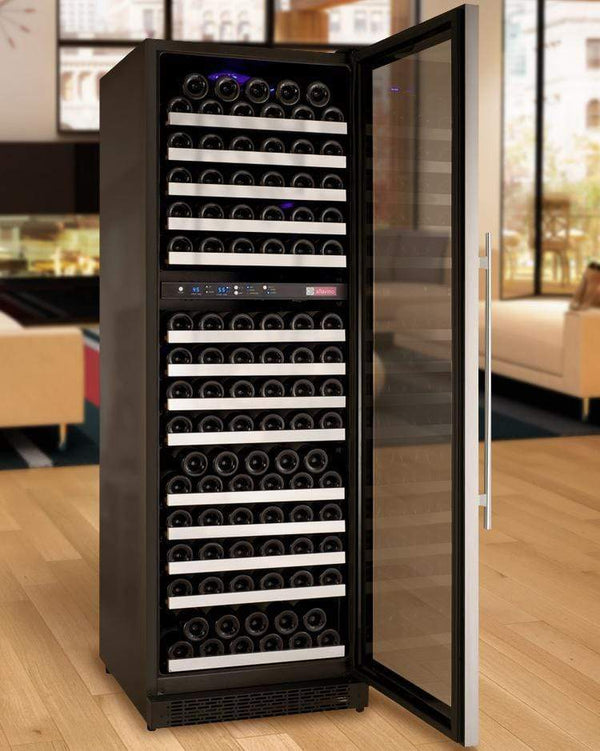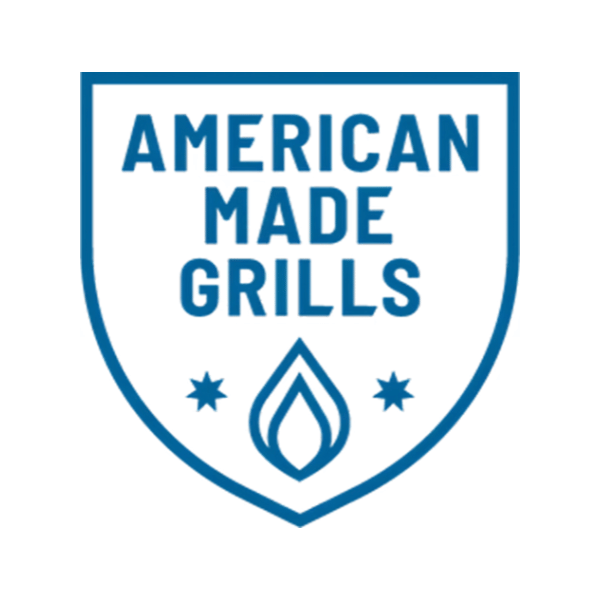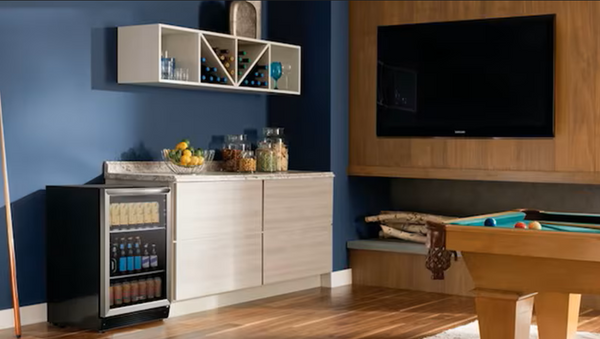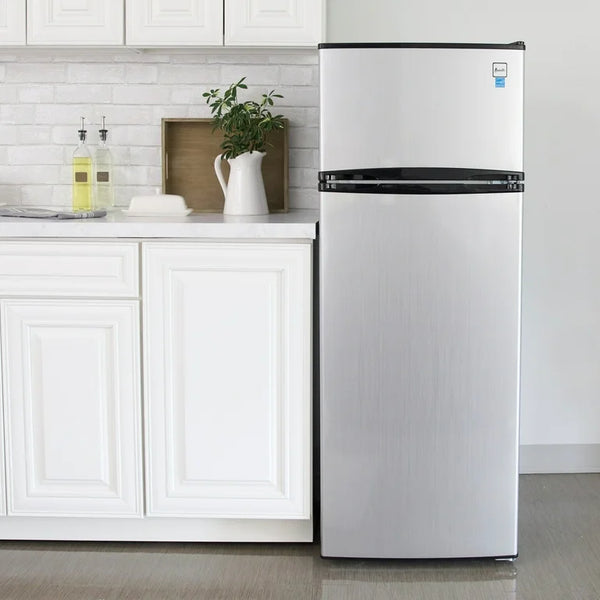How to Build a DIY Wine Cellar at Home Easily
Build Your Own Wine Cellar: A Beginner's Guide
By Jim Hopper, Wine Cooling Expert
Have you ever thought about building your own wine cellar? Do you have a huge wine collection and thought about upgrading your wine storage? Or are you planning to start one but don’t know how to begin?
If you’ve answered ‘’yes’’ to any of these questions, then you‘ve come to the right place. Whether you want to add value to your home, showcase your entire collection in one place, host your own “wine tasting’’ event, or simply want to improve and produce high-quality wine, all you need is a wine cellar.
For tailored advice and to bring your vision to life, don’t hesitate to explore our Wine Cellar Design support services.
Whatever your goal is, we will help you make the wine cellar of your dreams come to reality. We’ve put together a list of things to consider to help you get started and we’re excited to share with you a few custom wine cellar ideas at the end of this article.
If you’ve answered “yes” to any of these questions, then you’re in the right place. Whether you want to add value to your home, showcase your entire collection in one place, host your own “wine tasting” event, or simply want to improve and produce high-quality wine, all you need is a wine cellar.
For a comprehensive overview and even more detailed instructions, check out our complete guide on how to build a wine cellar.
What is a Wine Cellar?
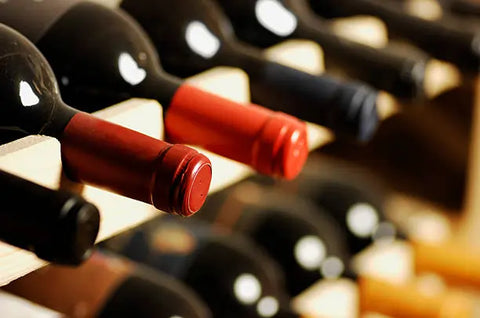
A wine cellar is a room for properly storing wine bottles or barrels to cultivate the best flavors and aroma over time. The purpose of wine cellars is to protect the quality of the wines from changes in temperature, humidity, vibration, and light exposure to avoid spoilage and ruining the flavor. To ensure your wines age to their optimal conditions, you must store them in a room with the ideal temperature and humidity levels as these factors can make or break the quality and market value of your wines.
Discover why proper wine storage matters for both taste and value.
2 Types of Wine Cellars
Before building a wine cellar, it’s necessary to understand the differences between these two types of wine cellars which will be briefly discussed below. Additionally, a DIY wine cellar can be a cost-effective and customizable option, allowing you to tailor the size and materials, such as water-resistant drywall, to suit your collection and storage needs.
1. Passively Cooled Wine Cellars
Passively Cooled Wine Cellars are built-in rooms that are usually found in temperate climates, basements, and underground spaces that are naturally humid and cool.
Pros: A practical solution for wine storage, cheaper to build and maintain, you don’t have to worry about power outages, and most importantly they are environment-friendly.
Cons: Since we have no control over the weather, outdoor temperature and humidity changes naturally occur and might degrade the quality of your wines.
Actively Cooled Wine Cellars are cellars that use a climate-controlled system such as a wine cooling unit and proper insulation to help maintain the ideal temperature, humidity, and other factors at all times. Using the best wine cellar insulation, like closed cell foam, is crucial as it effectively controls humidity and eliminates the need for an additional vapor barrier. If you don’t have a naturally cool subterranean space or live in a place that is too hot or too cold, then you have to invest in wine coolers to save your wines from temperature fluctuations.
Pros: The best solution to maintain wine quality, temperature, and humidity swings are effectively managed and controlled.
Cons: Expensive to build and maintain, installation of systems and insulation can cost you thousands of dollars, and quite complex to build since you need to consider where you’ll put electrical outlets and what kind of wine cooling unit would work best for your space.
Planning and Preparation
Assessing Your Space
Before you start building your wine cellar, it’s crucial to assess the space where you plan to install it. The size of the room, its location, and existing conditions all play a significant role in the success of your project. Ideally, a basement or a room with a consistent temperature and humidity level is perfect for a wine cellar. Make sure the space is free from direct sunlight, vibrations, and unpleasant odors, as these can negatively impact your wine collection.
For more inspiration and expert tips, check out our Wine Cellar Design support page.
Take a thorough look at the area for any air, light, or water leaks. Addressing these issues beforehand is essential to create an optimal environment for your wines. Ensuring the space is well-sealed and insulated will help maintain the ideal conditions for wine storage. By carefully assessing and preparing your space, you’ll set a solid foundation for your home wine cellar.
For more tips, see our perfect wine cellar building guide.
Budgeting and Cost Considerations
Building a wine cellar is a significant investment, so setting a realistic budget is essential. The cost of materials, equipment, and labor can vary widely depending on the size of the cellar, the quality of finishes, and the complexity of the design. When budgeting, consider the cost of wine racks, cooling units, insulation, and doors, as well as any necessary electrical or plumbing work.
A basic wine cellar can cost between $5,000 to $20,000, while a custom wine cellar can cost upwards of $50,000 or more. It’s important to factor in all potential expenses to avoid any surprises down the line. By planning your budget carefully, you can ensure that your wine cellar project stays on track and within your financial means.
Budget-Friendly DIY Wine Cellar Tips
If you’re on a tight budget, consider using stackable pine racks, sealing an existing closet or basement space, and monitoring conditions with affordable digital gauges. Anchor racks for safety and start small—your cellar can always grow with your collection.
Wine Cellar Location

The first step when planning to build your own wine cellar storage is to find a good location.
A wine cellar basement is the best choice since it’s easier to keep a consistent temperature humidity, and is isolated from other factors such as direct light and vibrations. A wine cellar under the stairs sounds lovely, however, people often use the stairs causing vibrations. So, think about what matters to you the most when deciding where to put your wine cellar.
Avoid insulated rooms and garages–they’re designed for cars, not wines, so it’s better to avoid those kinds of spaces. Never build your wine cellar in an area where power or mechanical problems often occur. It is also crucial to use an exterior grade door, at least 1 ¾ inches thick, to maintain the ideal controlled environment inside the cellar.
You may consult with a wine cellar design specialist or contractor to build your wine cellar, as they can help you choose components that will complement your style and blend in with the rest of your space.
For a deep dive into this approach, see our guide to building a basement wine cellar. Explore the best places to put a wine cellar in your home for more inspiration.
Choosing and Sealing Your Wine Cellar Door
A proper wine cellar door is crucial for maintaining a stable environment. Use an exterior-grade, insulated door (at least 1 ¾ inches thick) or a double/triple-paned tempered glass door for aesthetics. Install weatherstripping and a threshold to prevent air leaks. A well-sealed door should provide noticeable resistance when closing.
Wine Cooling Units
Temperature and humidity fluctuations are inevitable and can massively affect the quality of your wines. Remember that temperature control should be your top priority when it comes to building a wine cellar. The ideal temperature for wine storage is between 45-65°F and relative humidity of 50-70%, which a wine cooling system can provide and maintain.
We found the best wine cellar cooling units available in the market and we highly recommend these brands:
-
Breezaire Wine Cellar Coolers
- WhisperKOOL Wine Cellar Cooling Systems
- CellarCool Wine Room Cooling Units
Not sure what kind of wine cellar cooling unit you need? Here’s a very helpful guide to enlighten you in finding the best wine cooler cellar unit for your wine cellar: 9 Best Wine Cellar Cooling Units
Installation Type
Once you know how much space your wine cellar requires, selecting a wine cooling system that fits the size of your cellar and the kind of installation will be easy. These are the types of cooling systems:
1. Ductless Split Systems
Ductless Split Wine Cellar Cooling Units are the most efficient because they can easily cool your cellars. The condenser and evaporator are split. They are often noisy and need a lot of space for ventilation. This is a cost-effective solution for large, modern wine cellars because it doesn't require any in-wall construction. If you just have a small home wine cellar, this is a more expensive solution.

2. Ducted Split Systems
Ductless Split Wine Cooler Units provide you complete control over the wine cellar temperature and wine storage humidity levels through ducts. One of the advantages of a ducted system is that it can be placed up to 25 feet away from your cellar, reducing noise and vibrations while also leaving more space, depending on the installation.

3. Through-the-Wall Wine Cooling Systems (Self-Contained)
Through-the-Wall Wine Cellar Cooling Units (self-contained) are the easiest to install. It's just like installing an air conditioner in your wine cellar. They are also very affordable and have temperature and humidity controls built in. This wine cellar air conditioner works best in small cellars.
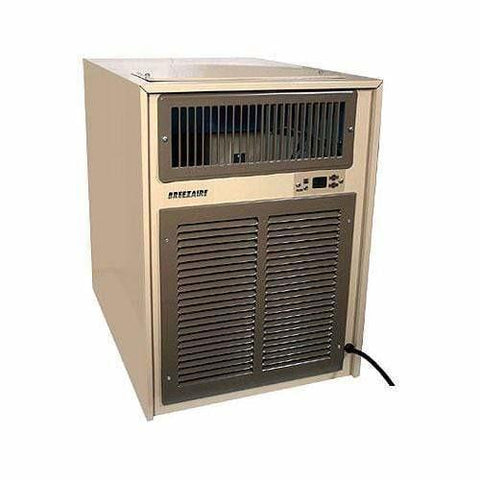
4. Fully Ducted - Self Contained Wine Cooling Systems
Fully Ducted - Self Contained Wine Cellar Cooling Systems have flexible installation options compared to self-contained systems. They can be installed up to 25 feet away from the cellar, allowing the cool air to flow into the cellar and the heat exhaust ducted outside. Noise can be eliminated with this type of system, depending on the installation.

5. Cabinet Cooling Systems
Cabinet cooling systems or wine cabinet coolers have a compact design to fit wine cabinets, wine cellar cabinets, modern wine closets, closet wine cellars, and other constricted enclosures.
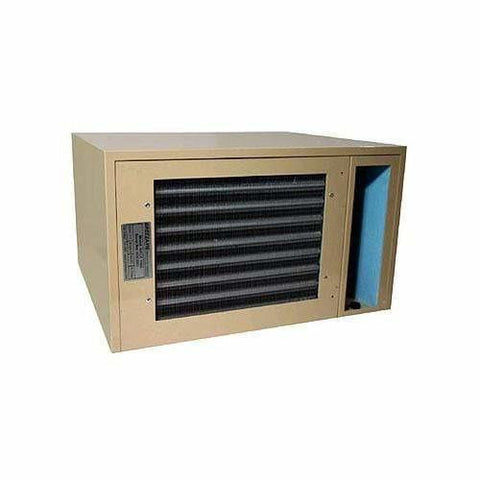
Step-by-Step Guide to Building Your DIY Wine Cellar
Building a wine cellar involves several critical steps. Here’s a clear roadmap to guide your project from start to finish:
-
Seal and Prepare the Space
Inspect for air, water, and light leaks. Seal cracks and gaps in floors, walls, and ceilings to prevent moisture and temperature fluctuations. -
Frame the Walls and Ceiling
Use 2x6 lumber for walls and 2x10 for ceilings to accommodate sufficient insulation. -
Install Vapor Barriers
Place a 6-mil plastic vapor barrier on the warm side of the insulation to prevent moisture buildup. -
Insulate Thoroughly
Use closed-cell foam or R-19 (walls) and R-30 (ceiling) insulation to maintain stable conditions. -
Finish Floors and Walls
Seal concrete floors (wait 28 days after pouring new concrete) or use tile with compatible grout sealant. Install water-resistant drywall or green board. -
Install Electrical and Lighting
Plan for outlets, lighting, and cooling units before closing up walls. Choose LED or low-UV lighting to protect your wine. -
Fit the Door
Install an exterior-grade, well-insulated door with weatherstripping for a tight seal. -
Paint and Finish Surfaces
Use water-based, zero-VOC paints and finishes to avoid odors that could affect your wine. -
Install Cooling System
Select a cooling unit sized for your cellar and climate. Install and test before adding wine. -
Add Wine Racks and Storage
Choose racks that fit your collection and space. Anchor racks for safety, especially in earthquake-prone areas. -
Final Touches
Add furniture, tasting areas, and décor as desired.
Building and Construction
Proper framing and insulation are critical components of a wine cellar. Using the right materials and techniques will help maintain a consistent temperature and humidity level, essential for preserving your wine collection. For the walls, use 2x6 framing lumber, and for the ceiling, use 2x10 framing lumber. This allows for thicker insulation with a higher R-value, which is crucial for a wine cellar.
Closed-cell foam insulation is an excellent option for a wine cellar, as it is impermeable to water, vapor, and air. Ensure that the insulation is installed correctly, and consider adding a vapor barrier to prevent moisture buildup. A minimum of R-19 insulation in the walls and R-30 in the ceiling is recommended to maintain a consistent temperature and humidity level. By paying attention to framing and insulation, you’ll create an environment that protects and preserves your wine collection for years to come.
Learn more about the best insulation options for wine cellars to ensure optimal storage conditions.
Sealing Floors and Walls
Properly sealed floors and walls are essential for protecting your collection from moisture and mold. For concrete floors, apply a high-quality concrete sealer after the slab has fully cured. If you’re installing tile, ensure the grout is sealed with a compatible product. For walls, use a vapor barrier and water-resistant drywall to prevent moisture intrusion.
Lighting and Electrical Planning
Lighting should protect your wine and create an inviting atmosphere. Avoid fluorescent or UV-emitting bulbs. Opt for LED lighting, which emits minimal heat and UV rays. Consider installing dimmers, motion sensors, or timers to limit light exposure. Plan electrical outlets and wiring before finishing walls to accommodate cooling units and lighting.
Important Factors to Consider

1. Temperature
As previously stated, the best temperature for keeping wines in prime condition is between 45-65 degrees Fahrenheit. Anything that goes beyond that range speeds up the aging process, causes oxidation, and compromises the flavor and aroma of wines.
Since wines are sensitive to temperature fluctuations, it's important to keep them at a consistently cool storage temperature, which a wine cooling unit can efficiently do.
Learn more about the ideal temperature for storing wine at home.
2. Humidity
Humidity control is crucial for proper wine storage because humidity levels have a significant impact on the corks. When the humidity level is low, the corks can dry up prematurely, allowing large amounts of air molecules to enter the bottle and deteriorate the quality of the wine as a result. If the humidity level is too high, it can damage the corks and can cause mold to grow.
To avoid these from happening, your wine storage should be maintained best at around a humidity level of 50-70 percent.
3. Light
If your wine bottles are exposed to an intense, direct light source, a chemical reaction can occur which can “cook” and alter the wine’s flavor. Wines are reactive and vulnerable to lighting, especially light-bodied ones. So, the lighter the wine, the more care you should take when storing them.
The types of lights to avoid:
- Direct sunlight
- Electric fluorescent
- UV lighting
It’s best to keep them away from harsh lights and store them in a dark, dry place to preserve their quality. You may also safeguard wine bottles by storing them in double-layered glass with UV protection. However, if you want to add some glow and ambiance into your wine cellar, you must pick the right type of lighting such as dimmable LED lights because they emit very little heat and can be dimmed when needed.
4. Vibration
Did you know that vibrations can ruin a wine’s aging process?
Vibrations can disrupt the sediments at the bottom causing chemical reactions when mixed with the liquid, which can alter the taste of the wine. Store your wines away from huge machines, noisy appliances, and doors to keep the bottles from shaking.
Natural calamities such as earthquakes are uncontrollable. However, you can prevent these vibrations by padding your wine cellar and storing the bottles in sturdy wine racks to keep them safe.
5. Wine Cellar Insulation and Other External Factors and Hazards
Other external factors to consider are security and safety standards like theft protection, fire prevention, and so on.
A secure and well-insulated wine cellar door is crucial to protect against external hazards and maintain the ideal temperature and humidity for wine storage.
If you want to learn more about proper wine storage, here are the best-storing tips and advice you could get.
Ventilation and Air Quality
Good air circulation helps prevent mold and maintains consistent temperature and humidity. Consider installing a small fan or air vent, and avoid storing strong-smelling items nearby. Use only low-odor, zero-VOC paints and finishes. For homes with mold history, consider an air purifier to protect your wine.
For further details, read our article on the importance of proper wine cellar ventilation.
Security Tips
Protect your valuable collection with a lockable door and consider a security camera or alarm system, especially for high-value cellars.
Wine Cellar Ideas
Now that you've figured out the essential requirements for building a wine cellar, it's time to choose your style. There are 3 styles of wine cellars to choose from: Traditional, Modern, and Transitional.
Looking for inspiration? Check out top custom wine cellar designs for elegant storage.
Wine Racking: Types and Materials
Wine racks come in various styles and materials, from traditional wood to modern metal. Choose between ready-made kits or custom racks to fit your space and collection. Ensure racks hold bottles on their sides and are anchored securely. Consider racks for large-format bottles if your collection includes them.
Traditional Wine Cellar

If you love warm tones, natural stones, wood floors, bricks, wood wine racks, rolling ladders, barrel ceilings, and basements with exquisite details, then choose a traditional style.
Modern Wine Cellar

If you enjoy a clean, sleek look for your wine cellar, built with stainless steel, metal wine racks, stainless steel wine racks, and glass walls, then go for the modern style.
It is crucial to use wine cellar doors that are specifically designed for wine cellars to maintain ideal temperature and humidity levels.
For modern wine racks, check out Ultra Wine Racks.
Transitional Wine Cellar

If you want a combination of both, then you’ll definitely love the transitional style. This style is a hybrid of the best features of both modern and traditional wine cellar design.
Maintaining Your Wine Cellar
Regularly clean and inspect your wine cellar for mold or moisture. Monitor temperature and humidity with reliable thermometers and hygrometers—many modern options offer remote monitoring. Keep detailed records of your collection and check seals and insulation periodically.
Common Mistakes to Avoid
- Skimping on insulation or vapor barriers, leading to mold or temperature swings
- Choosing the wrong door or failing to seal it properly
- Inadequate cooling unit sizing
- Using non-LED lighting that exposes wine to harmful UV
- Failing to anchor racks, risking collapse
Final Thoughts
When it comes to design, we all have our own preferences. Determine which wine cellar style best suits you based on your desired qualities, features, and needs for your wine cellar. Hope this article helped you and provide you with some inspiration for building a wine cellar.
For tailored advice and to bring your vision to life, don’t hesitate to explore our Wine Cellar Design support services.
Buy Wine Cellar Cooling Systems on SALE at Wine Coolers Empire!
Wine Coolers Empire is your authorized and trusted dealer of the best wine cellar cooling units, wine racks, and wine coolers from leading brands like WhisperKOOL, Breezaire, CellarCool, and Ultra Wine Racks. Buy now!
Feel free to contact us or call us at +1-888-407-7770 for inquiries.
📚 Frequently Asked Questions (FAQs)
How much would it cost to build a wine cellar?
What is the cheapest way to build a wine cellar?
Can I build a wine cellar?
Do wine cellars need ventilation?
Is it worth having a wine cellar?
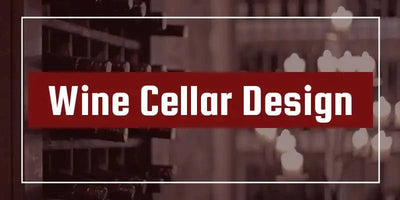
Designing or Upgrading a Wine Cellar?
We got you! Here at Wine Coolers Empire, we will guide you in building your dream wine cellar.

